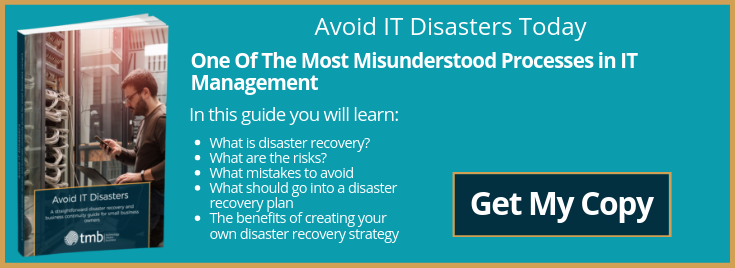How To Create A Disaster Recovery Strategy For A Small Business
- Anthony
- June 19, 2019
- 10:00 AM
- No Comments
Businesses encounter different strategic challenges at every phase of their journey. When it comes to designing the architecture of a disaster recovery plan for a small business, there are some particularly important decisions to make. Here’s a quick guide to policies, procedures, and best practices.
Invest In A Thorough Risk Assessment
When it comes to calculating the cost of disaster recovery, a formal risk assessment is the only way to achieve accuracy. Information technology disasters come in all shapes and types, and the cost to your company might be very different to another organisation of a similar size. Every minute of downtime costs money, but the precise figures will be unique to everyone. Therefore, a detailed risk assessment is needed in order to understand the exact nature of the requirement, and also the potential value to the company. This enables informed decision-making, and also results in a tailor-made disaster recovery plan.
Remove As Many Vulnerabilities As Possible
The best response to a disaster is not to have one in the first place! Whilst this is not always possible, most small enterprises have IT vulnerabilities that can be easily dealt with. These range from legacy software that does not communicate properly with the cloud, to employees remotely accessing the network and introducing security breaches. These issues can be identified and removed, meaning that the disaster recovery plan can be streamlined and simplified.
Think About Scalability
A disaster recovery plan needs to grow with your company. Security requirements change as companies evolve, and so does the cost of downtime. This means that for small companies in particular, a one-size-fits-all plan is bound to lead to problems. When costing, it is crucial not to end up paying for services that are not needed. However, it is also important to be sure that additional needs will be met when circumstances change.
Understand The Value Of Business Continuity
‘Business continuity’ refers to more than simply ‘downtime’. When calculating disaster preparedness, downtime is a primary figure. However, continuity refers to a much broader – and sometimes slightly intangible – financial effect on the company. For instance, data breaches can lead to a loss of customer confidence, which can have a long-lasting effect upon reputation. Studies have also shown that employees can feel invaded and traumatised by cyber attacks, and this can result in productivity loss and increased staff turnover. Turnover means a loss of skills, and therefore wasted training investment. The costs that people do not think about are often the most expensive. Business continuity means avoiding more than just downtime, it means protecting reputation and valuable resources.
Your IT Security In Safe Hands
At TMB, we have over 30 years’ experience developing bespoke solutions for small businesses. If you are interested in learning more about the value of investing in disaster recovery, get in touch today by calling 0333 900 9050, or send an email to info@tmb.co.uk.
Image source: Pixabay


